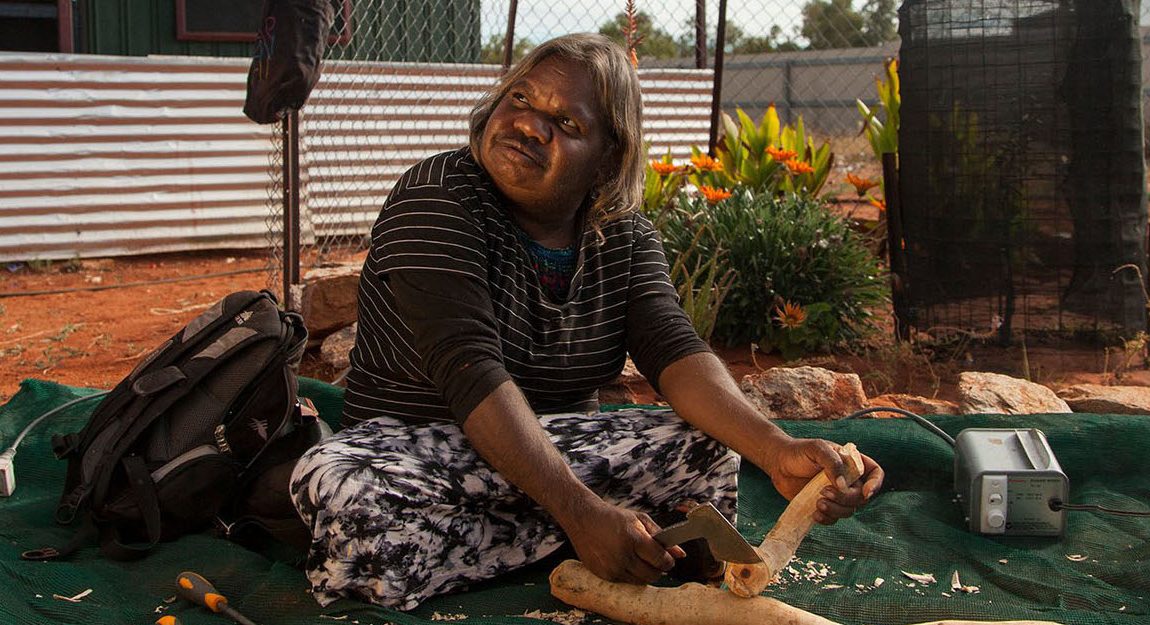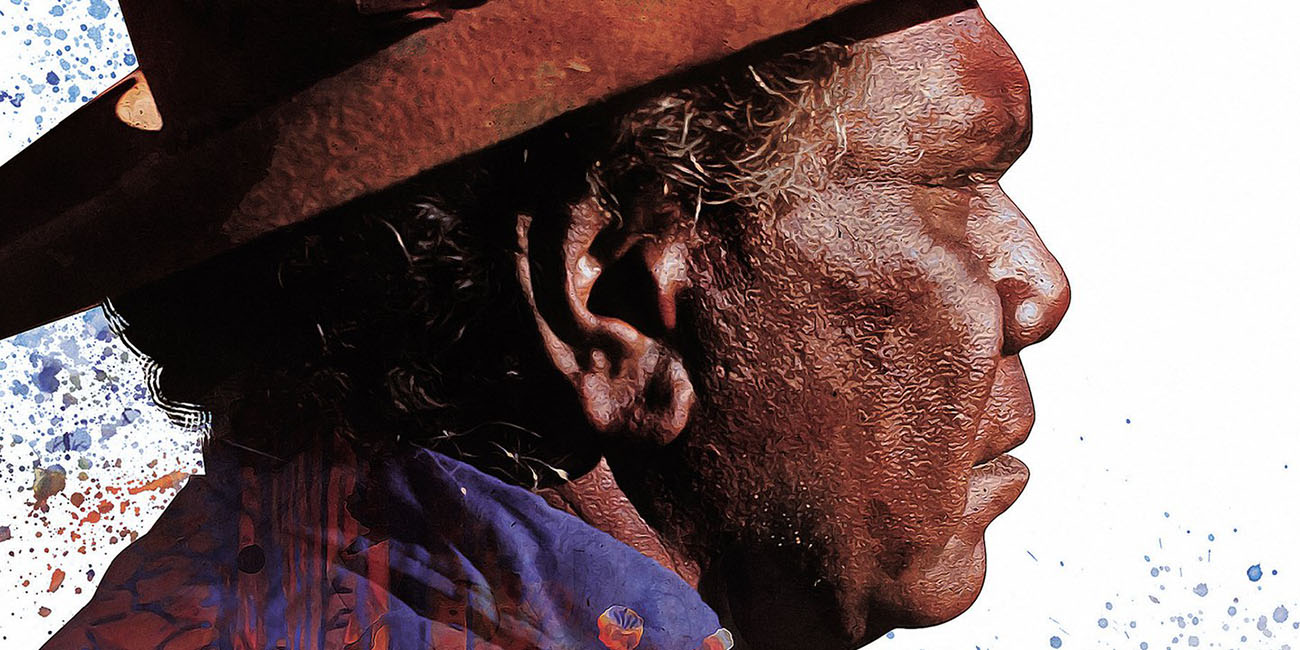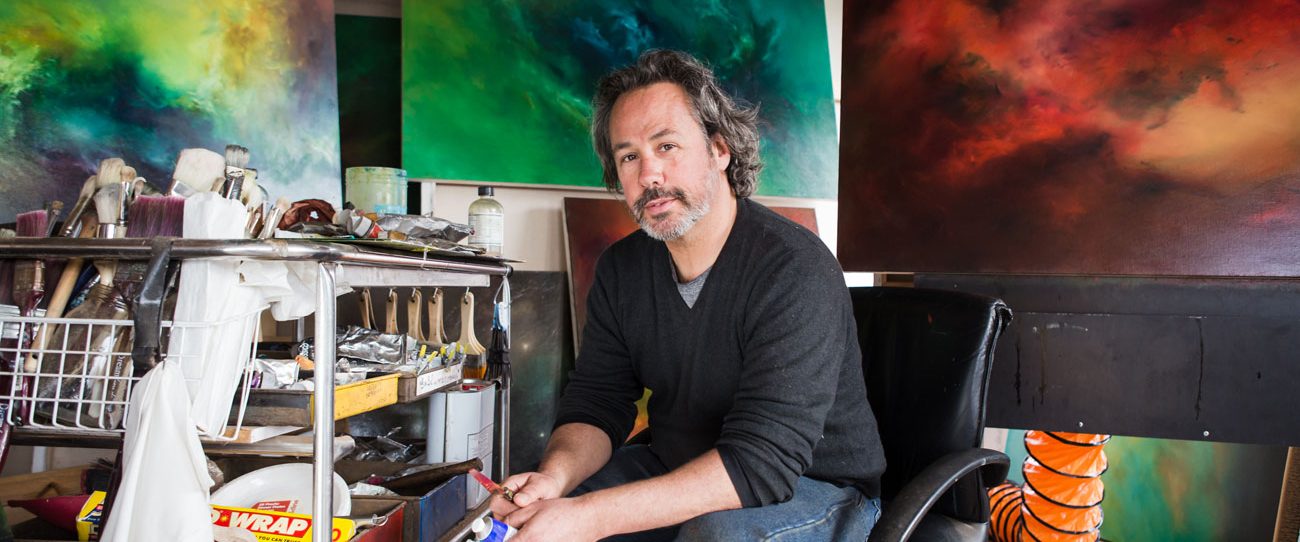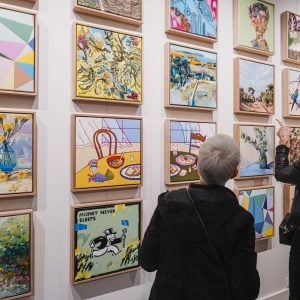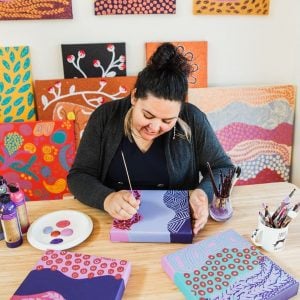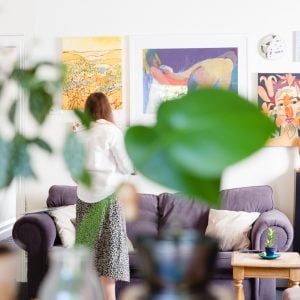Bluethumb’s Art Centres at TARNANTHI 2017
Today marks the first day of TARNANTHI 2017, South Australia’s festival of contemporary Aboriginal and Torres Strait Islander art. Tarnanthi, pronounced tar-nan-dee, is a Kaurna word from the traditional owners of the Adelaide Plains. The word means to come forth or appear, like the sun at first light.
For many cultures, first light symbolises new beginnings, and this is exactly what Barkindji artist and curator of the festival, Nici Cumpston, wants to encourage, providing artists with opportunities to create significant new work and extend the practices that they have been developing in studios, art centres, institutions and communities.
This year, the festival will showcase over 1,000 artists, both at exhibitions at the Art Gallery of South Australia and at over 20 partner venues across Adelaide. Its accompanying art fair (TARNANTHI Art Fair, 13-15th October) will feature over 40 art centres and individual artists from across the country.
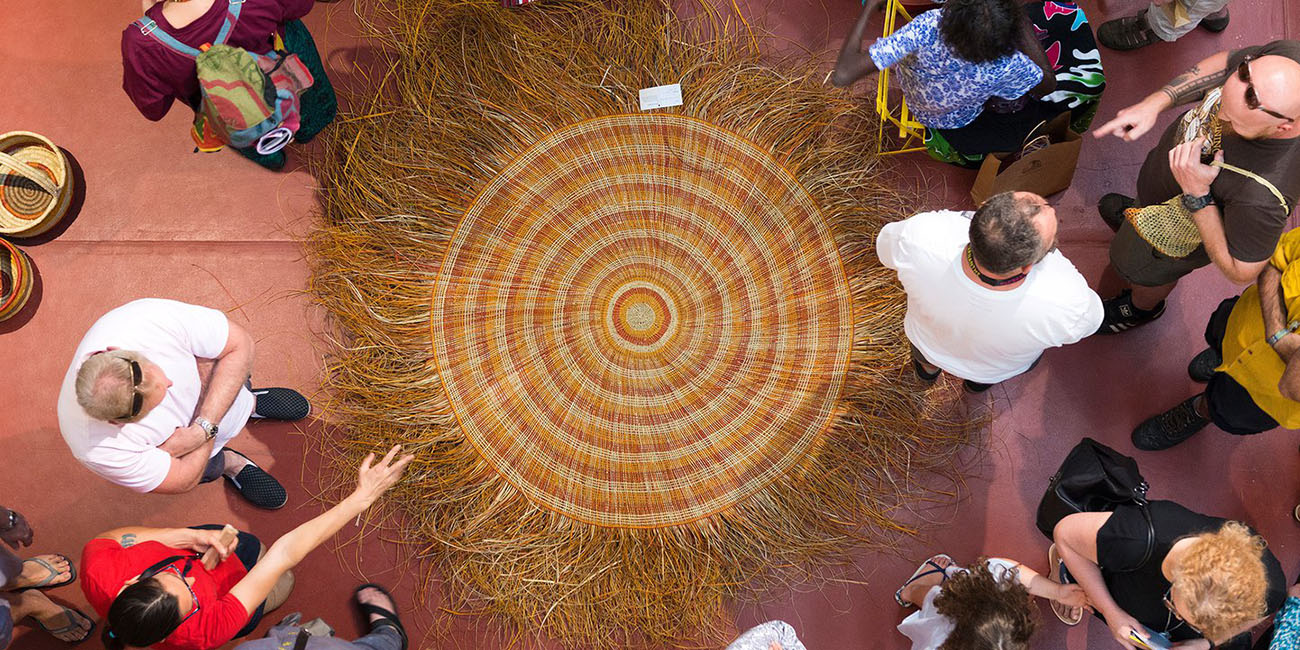
The TARNANTHI art fair is presented in partnership with Tandanya National Aboriginal Cultural Institute and showcases works by art centres and independent artists.
Specifically, this year’s Festival will have a focus on the seven art centres that span the South Australian Anangu Pitjantjatjara Yankunytjatjara (APY) Lands: Ernabella Arts (Pukatja), Tjala Arts (Amata), Mimili Maku Arts (Mimili), Iwantja Arts (Indulkana), Tjungu Palya (Nyapari), Kaltjiti Arts (Fregon) and Ninuku Arts (Kalka).
‘These artists are embodying the essence of breaking new ground with their art making,” says Ms Cumpston. “Through years of experience and presenting their work across the country, they are now driving their practise to ambitious new levels. TARNANTHI presents an opportunity to listen to where the artists want to take their ideas, and then support them to achieve their vision.”
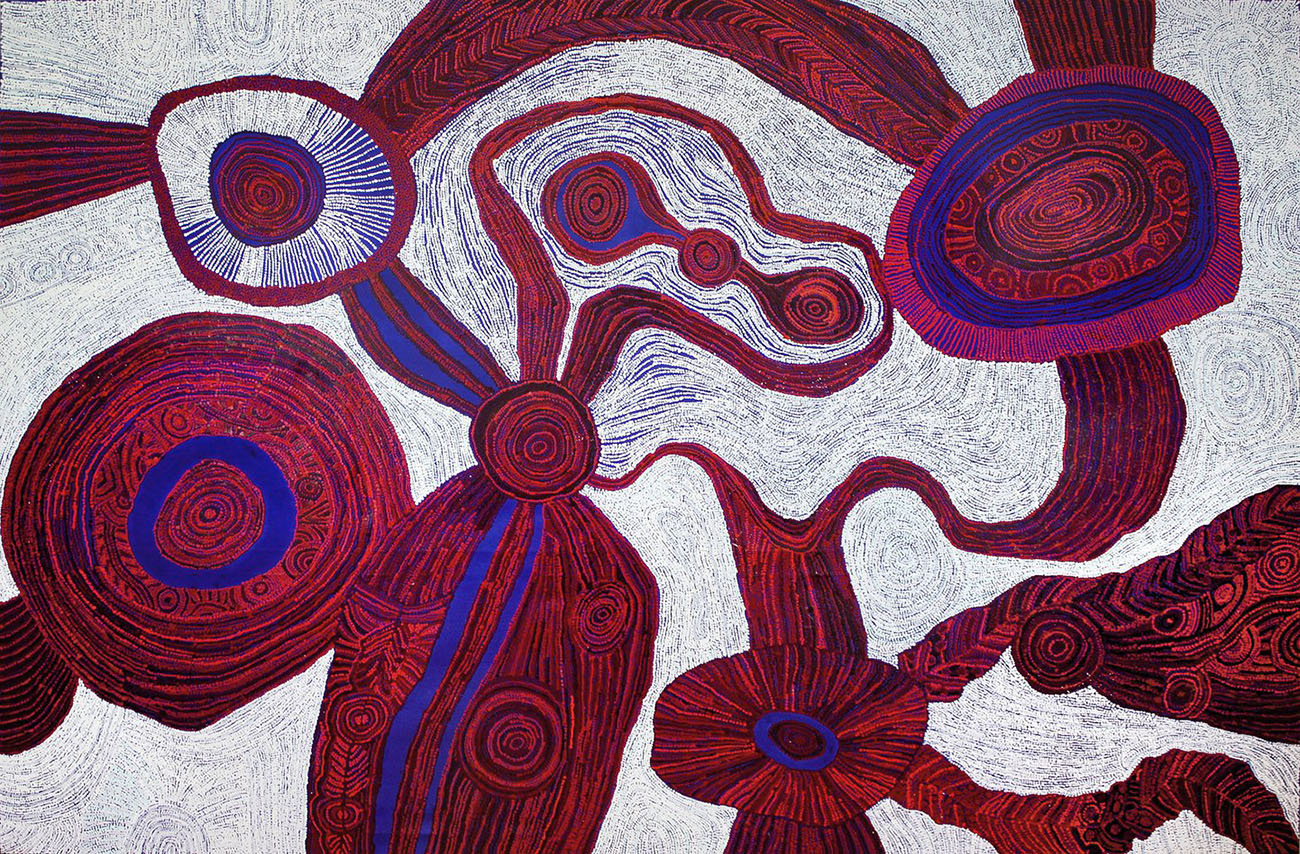
Antara by Betty Kuntiwa Pumani, born 1963, Perentie Bore, South Australia,Pitjantjatjara/Yankunytjatjara people. To be displayed at APY Lands Desert Salon.
Several collaborative and individual works by APY artists will be presented at TARNANTHI, including men’s major collaborative installation Kulata Tjuta (Many Spears) where more than six hundred kulata (spears), made by men from each of the art centres across the APY Lands, will be suspended from the ceiling of the Art Gallery of South Australia above a group of piti (water carriers) made by the women. This large-scale installation depicts the impact of atomic bomb testing in Anangu Lands.
Indigenous artists and art centres from across the rest of the country will also be represented. From Alice Springs, the artists at Yarrenyty Arltere will showcase Kulila, a self-portrait series featuring embroidered, soft sculptures, and in the community of Maningrida, husband and wife artists Bob Burrawal and Lena Yarinkura are creating an immersive, multimedia installation based on real life events. The work details a terrifying encounter Bob had as a young boy with Namorrodo, a malevolent shooting star spirit prevalent in and around the rocky escarpment and river country of central and western Arnhem Land.
What are our art centres up to at TARNANTHI?
Several of the art centres whose work is available on Bluethumb will also be exhibiting work. Among others, Maruku Arts, Papulankutja Artists, Tjarlirli Art and Warakurna Artists will all be exhibiting work as part of NGURRA: Home in the Ngaanyatjarra Lands, an exhibition presented by the South Australian Museum.

Nyarapayi Giles on her veranda in Tjukurla, 2017. Image courtesy Tjarlirli Art. Photo: Nyssa Miller.
More Ngaanyatjarra art will also be on show at NG Salon, which celebrates the dynamic cycling of influences and mediums in Ngaanyatjarra work, including tjanpi (weaving), punu (carving), painting and now increasingly, new media, and investigates the trajectories of its future.
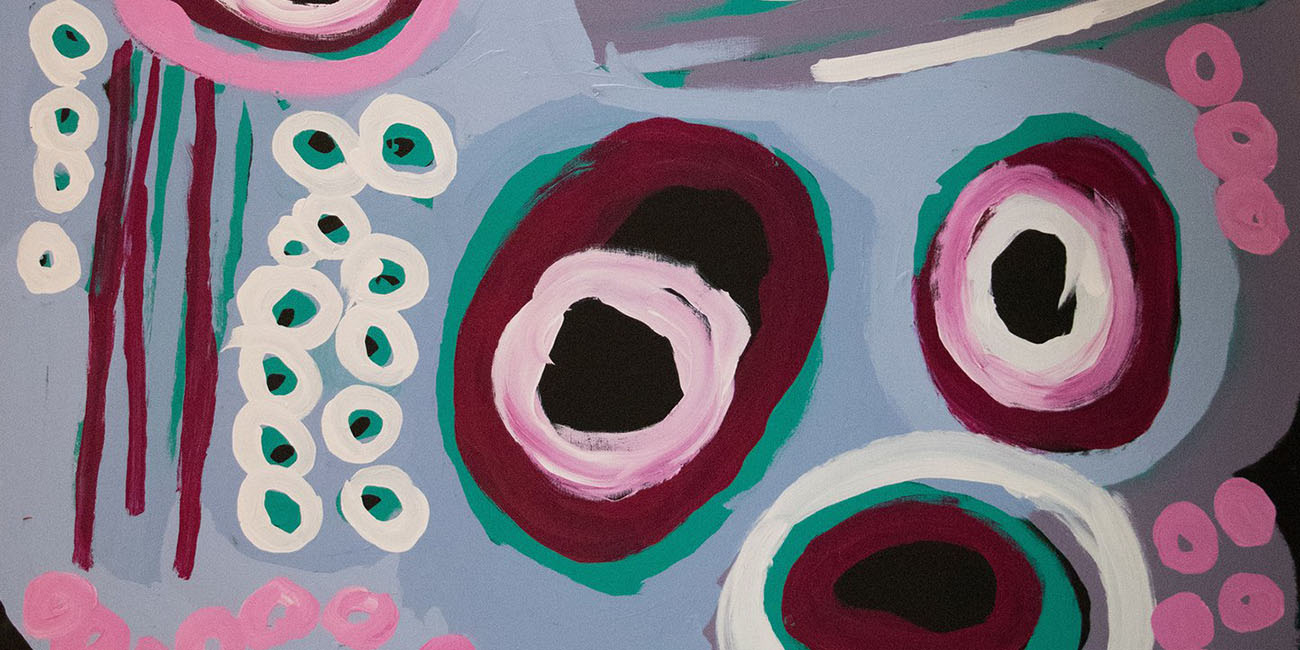
Ngamurru/Katjarra by Katjarra Butler, Ngaanyatjarra people, Western Australia, born 1946.Courtesy the artist and Tjarlirli Art. Courtesy the artist and Tjarlirli Art.
Several art centres on Bluethumb will also be showing work on a more individual basis. Maruku artists Cynthia Burke and Dallas Smythe will be demonstrating the creation of punu (carving) and walka boards using the same skills that Ngaanyatjarra people have used to make artefacts, weapons and tools for thousands of years.

Cynthia Burke carving punu in Warakurna. Image copyright Warakurna Artists, 2017, courtesy of Warakurna Artists. Photo: Casey Ayres.
Meanwhile, at Mangkaja Artists, Daisy Jupulja, Sonia Kurarra, Tjigila Nada Rawlins, and Lisa Uhl from Mangaka Arts Resource Agency are exhibiting their bright and bold free-flowing acrylic paintings on Perspex. In the same show, Ngarralja Tommy May will show his potent paintings on metal, scratching into the paint to reveal an underlying shiny metal skin.
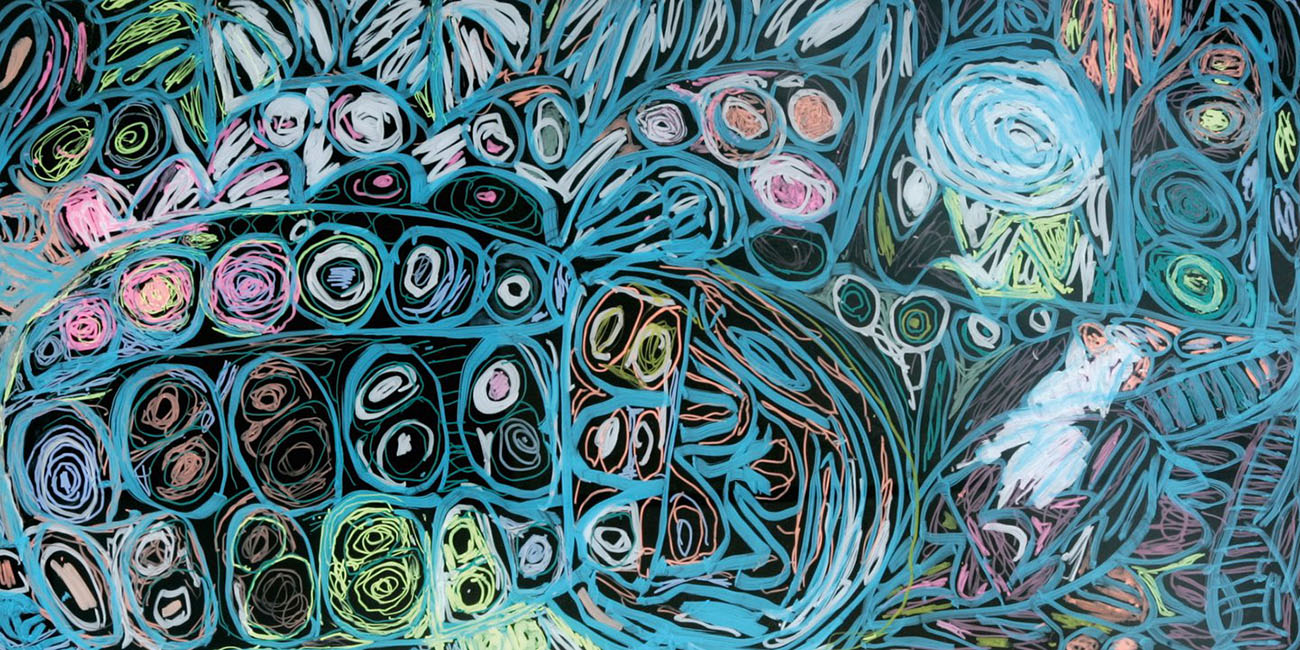
Detail: Artwork by Sonia Kurarra, Walmajarri people. Courtesy the artist and Mangkaja Arts Resource Agency.
Iltja Ntjarra Many Hands Art Centre is the home of the Namatjira watercolour artists and the Hermannsburg School style of art. They will be presenting an exhibition entitled What if this photograph is by Albert Namatjira?, which will show a collection of photographs by Rex Battarbee, and possibly Albert Namatjira, taken during the time the two artists spent together in Western Arrernte country in the 1930s. Working with Melbourne-based artist Tom Nicholson, artists from Many Hands are using the photographs as primary source material to create new visions of Country.
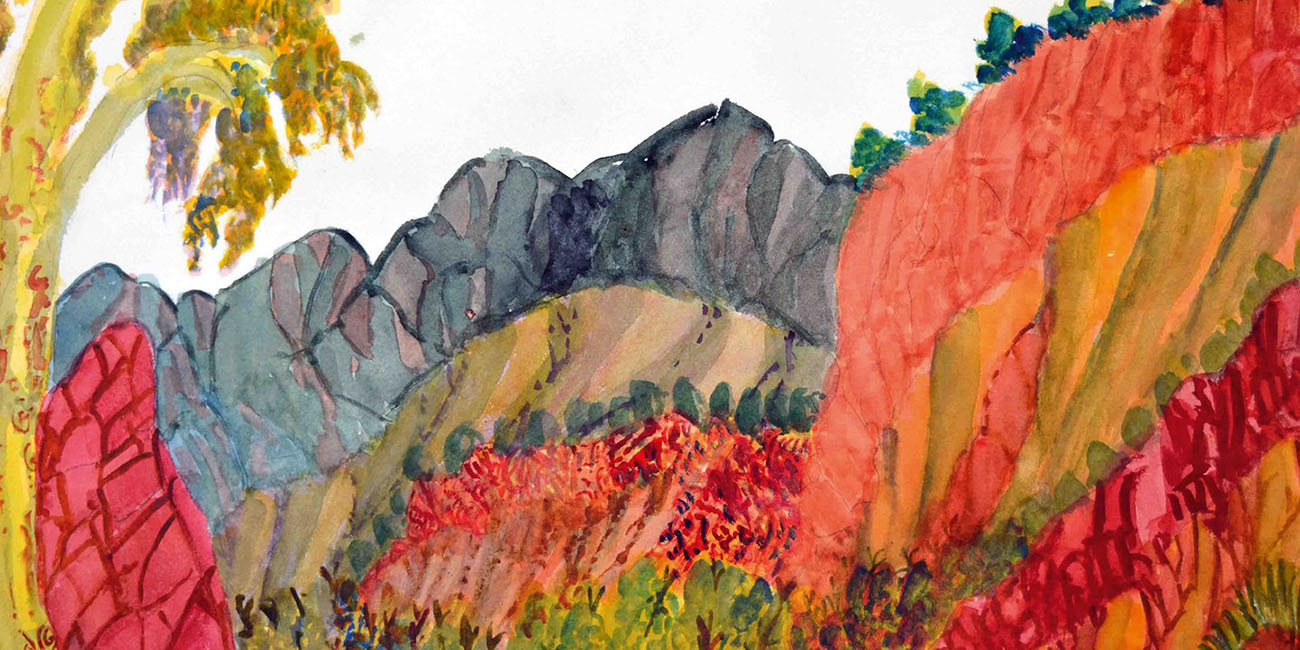
Detail from Going towards Ormiston Gorge by Ivy Pareroultja, Western Arrernte people, Northern Territory. Courtesy the artist and Iltja Ntjarra Many Hands Art Centre.
Artists from Iltja Ntjarra Many Hands Art Centre will also be presenting work in the Namatjira Project Auction on October 22, with the aim to raise money to restore Albert Namatjira’s copyright to his descendants after it was sold to an art dealer by the Australian government following his wrongful imprisonment and death.
The Namatjira story has also been documented in a film entitled Namatjira Project. Bluethumb hopes to host a screening of the film in a few months time, so keep your eyes out!

